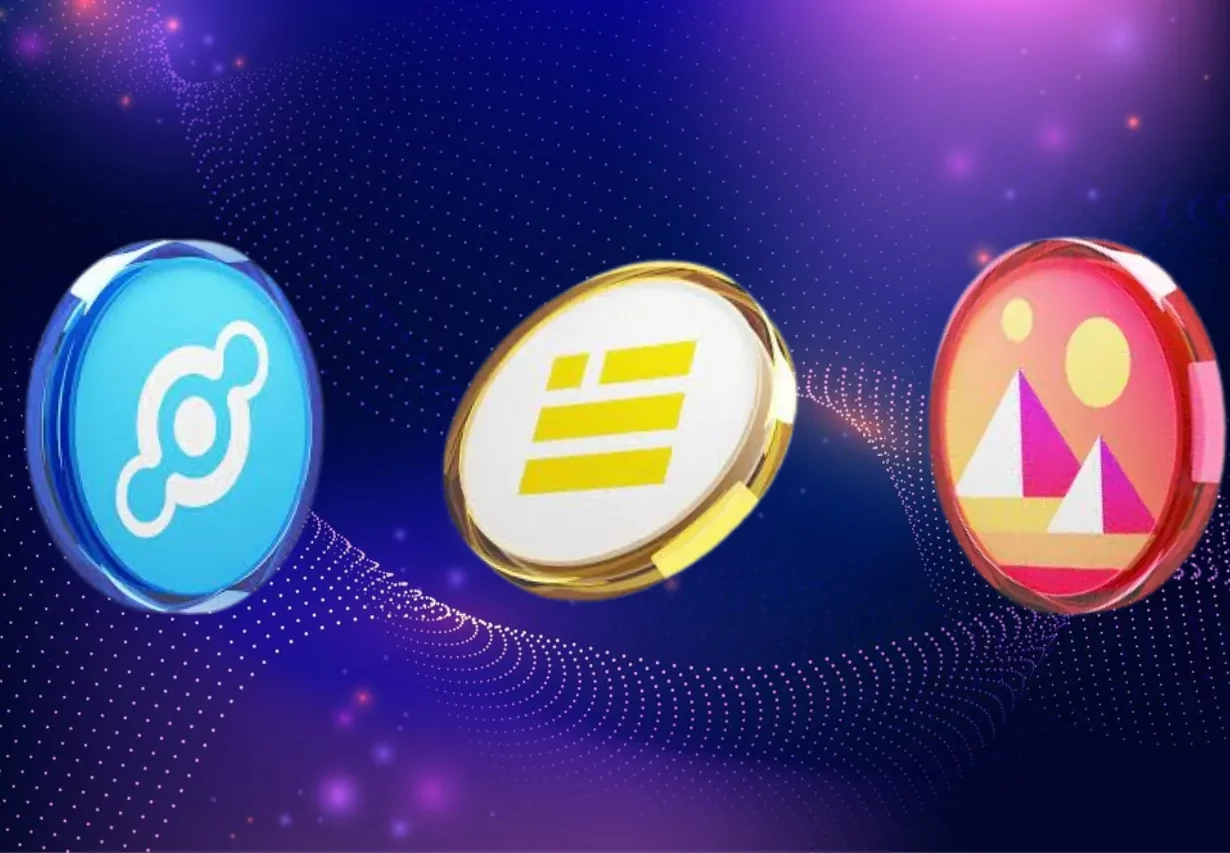In the dynamic world of cryptocurrency, investors are always on the lookout for the next big thing. Helium (HNT), BUSD (BUSD), and Decentraland (MANA) represent diverse facets of this ever-evolving market. Each coin has unique features that set it apart, from powering decentralized networks to providing stablecoin reliability and creating virtual reality platforms.
HNT’s focus on creating a decentralized wireless infrastructure offers a tangible use case, while BUSD’s peg to the US dollar aims for stability amidst crypto volatility. Meanwhile, MANA’s role in the virtual real estate of Decentraland presents a novel investment frontier. Understanding the nuances between these cryptocurrencies is crucial for making informed investment decisions.
As the crypto landscape continues to shift, weighing the potential and performance of HNT, BUSD, and MANA against each other is more relevant than ever. They’re not just digital assets; they’re gateways to different sectors within the blockchain universe.
Helium (HNT)
Helium presents a Decentralized Wireless Network leveraging blockchain technology. Individuals and businesses deploy Hotspots, contributing to broad coverage and mining HNT. It stands at the forefront of combining cryptocurrency with IoT. Utilizing a Proof-of-Coverage consensus model, it incentivizes expansion by rewarding nodes providing network connectivity.
Unlike BUSD’s stable value, HNT’s price fluctuates, reflecting the dynamic nature of its market. Its value is driven by network growth and utility rather than fiat currency pegs. MANA and HNT share a virtual component, but HNT’s real-world infrastructure utility sets them apart.
Helium’s scope spans peering with telecommunication giants to everyday device connectivity. Future projections include seamless global IoT coverage and potentially revolutionizing wireless networks. The system’s architecture and tokenomics encourage adoption, positioning HNT for innovative prospects in wireless communication advancements.
BUSD (BUSD)
BUSD, a stablecoin pegged to the US Dollar, provides a secure and stable store of value within the volatile crypto market. As a fiat-collateralized cryptocurrency, BUSD maintains a 1:1 ratio with USD, ensuring predictable value.
With strict adherence to regulatory standards, BUSD’s operations are audited regularly to uphold transparency and trust. This digital currency operates on the Ethereum network, leveraging its robust security and smart contract functionality.
Its classifications include:
- Digital Fiat
- Stablecoin
- ERC-20 Token
The practical applications of BUSD span from everyday transactions to serving as a haven during market turbulence. It’s seamlessly integrated into numerous crypto exchanges and is widely accepted for trading pairs.
Despite its stability, challenges such as reliance on traditional banking systems and regulatory changes persist. However, the increasing demand for stablecoins suggests a promising future.
For those looking to explore related concepts, Tether (USDT) and USD Coin (USDC) offer similar functionalities with subtle distinctions in their operational frameworks and issuance entities.
Decentraland (MANA)
Decentraland pioneers the virtual reality space with a blockchain-based platform. Users can create, experience, and monetize content and applications in this digital landscape. At its core, MANA is the native cryptocurrency token that facilitates transactions within Decentraland’s ecosystem. Unlike BUSD’s stable value, MANA’s price fluctuates and is driven by market dynamics and user engagement within the virtual world.
With MANA, participants buy and sell virtual land parcels, known as LAND. Ownership of LAND is recorded on the Ethereum blockchain, ensuring security and proving provenance.
Types of assets in Decentraland include:
- LAND
- Wearables
- Avatars
- Names
Each category provides a different scope of use and investment opportunity. While LAND signifies virtual real estate, wearables and avatars offer personalization; names are unique identifiers within the world.
The practical use of MANA extends beyond simple transactions. It’s a gateway to virtual experiences, events, and games. The value of MANA may rise as Decentraland grows in popularity and utility.
Difficulties such as scalability and full adoption are common in such bleeding-edge tech. Still, trends indicate a bright future as virtual and augmented reality technologies advance. Decentraland is poised to evolve, potentially integrating further with the wider metaverse concept.
Conclusion
Deciding between Helium, BUSD, and Decentraland’s MANA hinges on individual investment goals and risk tolerance. Helium’s network expansion, BUSD’s stablecoin reliability, and MANA’s virtual real estate dynamics each cater to different market segments. While Helium innovates in IoT connectivity, BUSD offers a safe harbor in volatile markets, and MANA captures the imagination of virtual world enthusiasts. Ultimately, savvy investors will weigh each currency’s prospects and their alignment with broader market trends before committing capital. As the crypto landscape evolves, so too will the opportunities within these diverse platforms.
Frequently Asked Questions
What is Helium (HNT)?
Helium (HNT) is a decentralized blockchain network for Internet of Things (IoT) devices. It enables wireless connectivity for various devices and rewards users with HNT tokens for providing and validating wireless coverage.
What is BUSD (BUSD)?
BUSD is a stablecoin pegged 1:1 to the US dollar and is used for digital transactions. It offers a stable medium of exchange on the blockchain, reducing volatility usually associated with cryptocurrencies.
What is Decentraland (MANA)?
Decentraland (MANA) is a digital virtual reality platform powered by the Ethereum blockchain. MANA is the native cryptocurrency used for transactions within Decentraland, including buying and selling virtual land and other digital assets.
What can you buy with MANA in Decentraland?
With MANA, you can purchase a variety of in-game assets in Decentraland, such as LAND parcels, wearables for avatars, unique names, and more, each offering different functionalities and investment potentials.
How does the value of MANA change?
The value of MANA can change based on market dynamics, such as supply and demand, and the level of user engagement in the Decentraland virtual world. Increased popularity and utility may lead to a rise in MANA’s value.



Leave a Reply